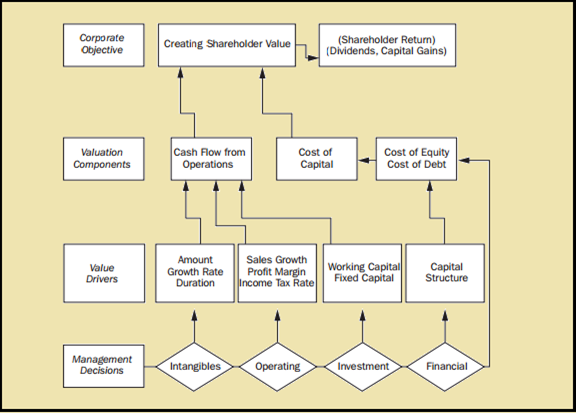Alfred Rappaport 7 Value Drivers

10 ways to create shareholder value by alfred rappaport become fashionable to blame the pursuit of shareholder value for the ills besetting corporate america. But he is also in the rare position of viewing the drivers of shareholder value through. Of the person whose behavior we would like to affect” (Principles 7 and 8).
Executive Summary Reprint: R0609C Executives have developed tunnel vision in their pursuit of shareholder value, focusing on short-term performance at the expense of investing in long-term growth. It’s time to broaden that perspective and begin shaping business strategies in light of the competitive landscape, not the shareholder list. In this article, Alfred Rappaport offers ten basic principles to help executives create lasting shareholder value. For starters, companies should not manage earnings or provide earnings guidance; those that fail to embrace this first principle of shareholder value will almost certainly be unable to follow the rest.
Additionally, leaders should make strategic decisions and acquisitions and carry assets that maximize expected value, even if near-term earnings are negatively affected as a result. During times when there are no credible value-creating opportunities to invest in the business, companies should avoid using excess cash to make investments that look good on the surface but might end up destroying value, such as ill-advised, overpriced acquisitions. It would be better to return the cash to shareholders in the form of dividends and buybacks. Rappaport also offers guidelines for establishing effective pay incentives at every level of management; emphasizes that senior executives need to lay their wealth on the line just as shareholders do; and urges companies to embrace full disclosure, an antidote to short-term earnings obsession that serves to lessen investor uncertainty, which could reduce the cost of capital and increase the share price. The author notes that a few types of companies—high-tech start-ups, for example, and severely capital-constrained organizations—cannot afford to ignore market pressures for short-term performance. Most companies with a sound, well-executed business model, however, could better realize their potential for creating shareholder value by adopting the ten principles. Many firms sacrifice sustained growth for short-term financial gain.

For example, a whopping 80% of executives would intentionally limit critical R&D spending just to meet quarterly earnings benchmarks. Computer ethics 3rd edition by deborah g johnson pdf download pdf. 
Another practice: Ensure that executives bear the same risks of ownership that shareholders do—by requiring them to own stock in the firm. At eBay, for example, executives have to own company shares equivalent to three times their annual base salary. EBay’s rationale? When executives have significant skin in the game, they tend to make decisions with long-term value in mind. The Idea in Practice Rappaport recommends these additional practices to create long-term growth for your company: • Make strategic decisions that maximize expected future value—even at the expense of lower near-term earnings. In comparing strategic options, ask: Which operating units’ potential to create long-term growth warrants additional capital investments? Which have limited potential and therefore should be restructured or divested?
What mix of investments across operating units should produce the most long-term value? • Carry assets only if they maximize the long-term value of your firm. Focus on activities that contribute most to long-term value, such as research and strategic hiring. Outsource lower value activities such as manufacturing. Consider Dell Computer’s well-chronicled direct-to-consumer custom PC assembly business model.
Dell invests extensively in marketing and telephone sales while minimizing its investments in distribution, manufacturing, and inventory-carrying facilities. • Return excess cash to shareholders when there are no value-creating opportunities in which to invest.
Disburse excess cash reserves to shareholders through dividends and share buybacks. You’ll give shareholders a chance to earn better returns elsewhere—and prevent management from using the cash to make misguided value-destroying investments. • Reward senior executives for delivering superior long-term returns. Standard stock options diminish long-term motivation, since many executives cash out early. Instead, use.